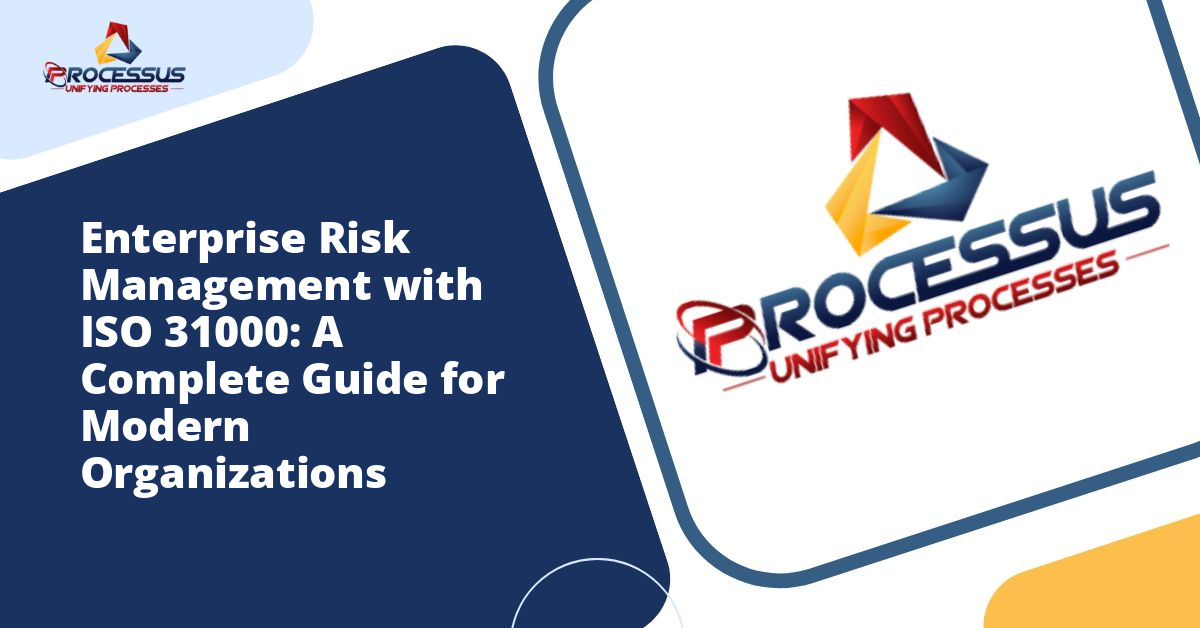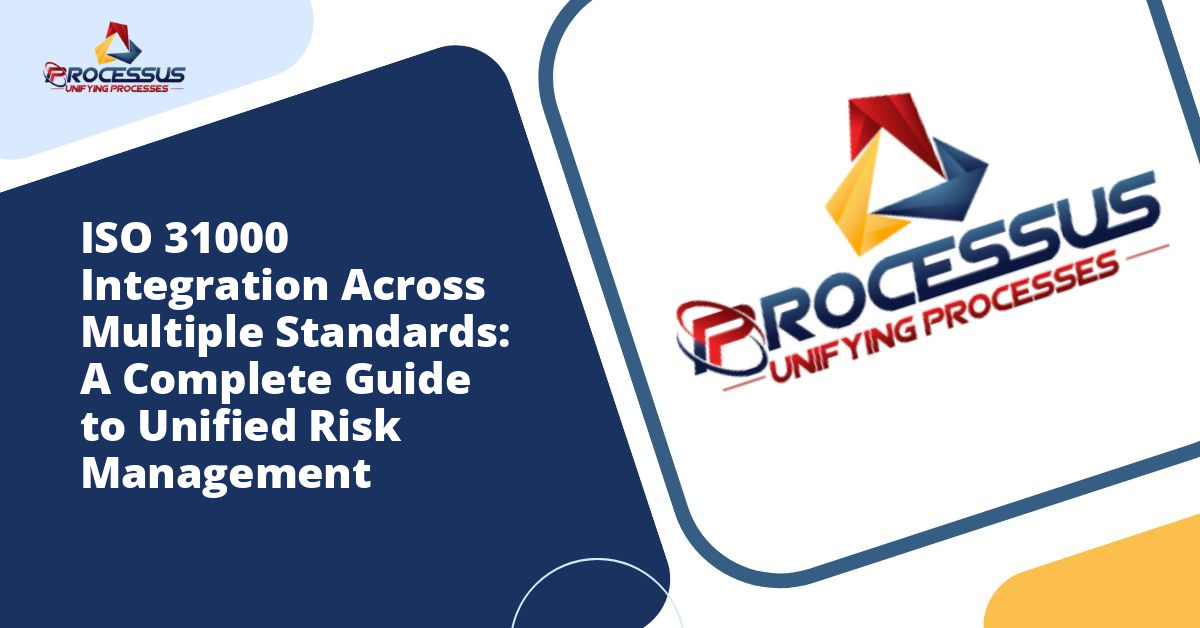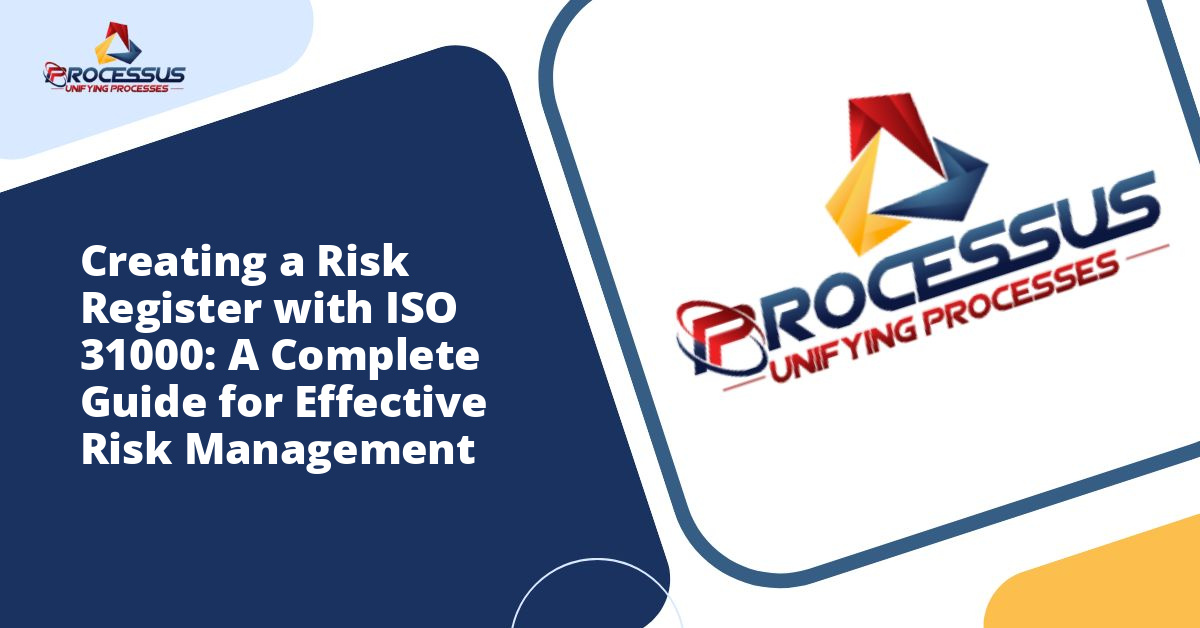In today’s rapidly evolving business landscape, organizations face an unprecedented array of risks that can threaten their operations, reputation, and bottom line. From cybersecurity threats and supply chain disruptions to regulatory changes and market volatility, the challenges are diverse and constantly shifting. This is where Enterprise Risk Management (ERM) becomes not just beneficial, but essential for organizational survival and success.
ISO 31000, the international standard for risk management, has emerged as the gold standard framework for organizations seeking to implement robust and effective risk management practices. This comprehensive guide explores how businesses can leverage ISO 31000 to build resilient operations, make informed decisions, and create sustainable value in an uncertain world. You might also enjoy reading about ISO 31000 Risk Management Framework Implementation: A Complete Guide for Organizations.
Understanding Enterprise Risk Management
Enterprise Risk Management represents a holistic approach to identifying, assessing, and managing risks across an entire organization. Unlike traditional risk management methods that operate in silos, ERM takes a comprehensive view of all potential threats and opportunities that could impact organizational objectives. You might also enjoy reading about ISO 31000 vs ISO 27005: A Complete Guide to Choosing the Right Risk Management Framework.
The fundamental premise of ERM is that risk management should be integrated into every aspect of organizational operations, from strategic planning to day-to-day activities. This integration ensures that decision-makers at all levels have a clear understanding of the risks they face and the tools needed to address them effectively. You might also enjoy reading about Understanding Risk Appetite and Tolerance: A Complete Guide Using ISO 31000 Framework.
Modern ERM goes beyond simply avoiding negative outcomes. It also involves recognizing and capitalizing on opportunities that arise from uncertainty. This balanced perspective enables organizations to pursue innovation and growth while maintaining appropriate safeguards against potential threats.
What is ISO 31000?
ISO 31000 is an international standard published by the International Organization for Standardization that provides principles, framework, and a process for managing risk. First released in 2009 and updated in 2018, it has become the most widely recognized risk management standard globally.
Unlike some ISO standards, ISO 31000 is not designed for certification purposes. Instead, it serves as a guidance document that organizations can adapt to their specific contexts, industries, and needs. This flexibility makes it applicable to organizations of all sizes and sectors, from small startups to multinational corporations, and from private companies to government agencies.
The standard is built on the understanding that effective risk management creates and protects value. It improves performance, encourages innovation, and helps organizations achieve their objectives. By providing a common approach to managing risk, ISO 31000 also facilitates better communication and governance across the organization.
The Core Principles of ISO 31000
ISO 31000 is founded on eight key principles that guide effective risk management. Understanding these principles is essential for any organization looking to implement the standard successfully.
Integrated
Risk management must be an integral part of all organizational activities, not a standalone function. This means embedding risk considerations into strategic planning, operational processes, and decision-making at every level. When risk management is truly integrated, it becomes part of the organizational culture rather than an additional burden.
Structured and Comprehensive
A structured and comprehensive approach to risk management contributes to consistent and comparable results. Organizations need systematic processes that cover all aspects of their operations, ensuring no critical risks are overlooked while maintaining efficiency in risk management activities.
Customized
The risk management framework and process should be customized to fit the organization’s external and internal context. There is no one-size-fits-all solution. Factors such as organizational culture, industry sector, regulatory environment, and specific business objectives all influence how risk management should be implemented.
Inclusive
Appropriate and timely involvement of stakeholders enables their knowledge, views, and perceptions to be considered. This inclusive approach ensures that risk identification and assessment benefit from diverse perspectives and that risk treatment decisions have broad buy-in across the organization.
Dynamic
Risks constantly evolve as the business environment changes. An effective risk management system must be dynamic, continuously sensing and responding to change. Regular monitoring and review processes ensure that risk assessments remain current and relevant.
Best Available Information
Risk management decisions should be based on the best available information, including historical data, experience, stakeholder feedback, observation, forecasts, and expert judgment. Organizations must also recognize the limitations of their information and how these limitations might affect risk management decisions.
Human and Cultural Factors
Human behavior and culture significantly influence all aspects of risk management. The standard recognizes that people’s perceptions, capabilities, and intentions affect how risks are identified and managed. Building a strong risk-aware culture is therefore critical to success.
Continual Improvement
Risk management should continually improve through learning and experience. Organizations must establish processes for capturing lessons learned and incorporating them into future risk management activities.
The ISO 31000 Framework
The ISO 31000 framework provides the foundation for integrating risk management into the organization. It consists of several interconnected components that work together to create a comprehensive risk management system.
Leadership and Commitment
Successful implementation of ISO 31000 requires strong leadership commitment at the highest levels of the organization. Senior management must demonstrate their commitment through actions such as allocating resources, establishing accountability, integrating risk management into business processes, and ensuring that risk management considerations are part of strategic decision-making.
Integration
Risk management must be embedded throughout the organization rather than treated as a separate activity. This integration happens through incorporating risk management into governance structures, strategic and operational planning, reporting mechanisms, and performance evaluation processes.
Design
Organizations must design their risk management framework based on a thorough understanding of their internal and external context. This includes considering organizational structure, culture, capabilities, and constraints, as well as external factors such as regulatory requirements, market conditions, and stakeholder expectations.
Implementation
Implementing the framework involves putting the designed risk management processes into practice across the organization. This includes developing plans, establishing communication channels, providing training, and ensuring that resources are available to support risk management activities.
Evaluation
Regular evaluation of the risk management framework ensures it remains effective and appropriate. Organizations should assess whether the framework is achieving its intended outcomes, whether it remains suitable for the organizational context, and where improvements can be made.
Improvement
Based on evaluation results, organizations should continually adapt and improve their risk management framework. This ongoing refinement ensures the framework evolves with changing circumstances and incorporates lessons learned from experience.
The ISO 31000 Risk Management Process
The risk management process outlined in ISO 31000 provides a systematic approach to managing specific risks. This process should be applied consistently across the organization while allowing for flexibility based on the particular context.
Communication and Consultation
Effective communication and consultation with stakeholders should occur throughout the risk management process. This ensures that those responsible for implementing risk management and those with a stake in the outcomes understand the basis for decisions and the reasons why particular actions are required.
Scope, Context, and Criteria
Before assessing risks, organizations must establish the scope of their risk management activities, understand the external and internal context, and define criteria for evaluating risk significance. This foundation ensures that risk assessment is relevant and aligned with organizational objectives.
Risk Assessment
Risk assessment is the overall process of risk identification, risk analysis, and risk evaluation. This is often considered the heart of the risk management process.
Risk identification involves finding, recognizing, and describing risks that might help or prevent an organization achieving its objectives. Organizations should use a variety of techniques and information sources to ensure comprehensive identification.
Risk analysis involves developing an understanding of the identified risks. This includes considering the causes and sources of risks, their positive and negative consequences, and the likelihood that those consequences will occur. Analysis can be qualitative, quantitative, or a combination of both.
Risk evaluation involves comparing the results of risk analysis with established risk criteria to determine where additional action is required. This helps organizations prioritize risks and make decisions about risk treatment.
Risk Treatment
Risk treatment involves selecting and implementing options for addressing risk. Common treatment options include avoiding the risk by deciding not to start or continue with the activity, taking or increasing risk to pursue an opportunity, removing the risk source, changing the likelihood or consequences, sharing the risk with another party, or retaining the risk by informed decision.
Organizations often use multiple treatment options in combination. Treatment plans should clearly specify how the chosen options will be implemented, who is responsible, timelines, and expected outcomes.
Monitoring and Review
Ongoing monitoring and periodic review of the risk management process and its outcomes ensure that assumptions remain valid, risk assessments stay current, and risk treatments remain effective. This component also provides a mechanism for capturing lessons learned and driving continual improvement.
Recording and Reporting
The risk management process and its outcomes should be documented and reported through appropriate mechanisms. Records provide the foundation for improvement, demonstrate due diligence, and facilitate communication with stakeholders.
Benefits of Implementing ISO 31000
Organizations that successfully implement ISO 31000 can expect to realize numerous benefits that contribute to improved performance and resilience.
Enhanced Decision-Making
By providing a structured approach to considering risks and opportunities, ISO 31000 helps organizations make better-informed decisions. Decision-makers gain a clearer understanding of uncertainties and their potential impacts, leading to choices that better balance risk and reward.
Improved Governance
ISO 31000 strengthens organizational governance by establishing clear accountability for risk management, improving transparency, and ensuring that risk considerations are part of strategic planning and oversight processes.
Increased Stakeholder Confidence
Demonstrating a commitment to international best practices in risk management builds confidence among stakeholders including investors, customers, regulators, and employees. This confidence can translate into competitive advantages and improved relationships.
Better Resource Allocation
Understanding risks helps organizations allocate resources more effectively. Rather than spreading resources thinly across all potential risks, organizations can focus on those areas where risk treatment will have the greatest impact on achieving objectives.
Operational Efficiency
Integrated risk management reduces duplication of effort and ensures that risk management activities support rather than hinder operational efficiency. By embedding risk considerations into existing processes, organizations avoid creating parallel structures and bureaucratic overhead.
Enhanced Resilience
Organizations with mature risk management systems are better positioned to anticipate, withstand, and recover from disruptions. This resilience protects value and enables continued operation even in challenging circumstances.
Implementing ISO 31000 in Your Organization
Successfully implementing ISO 31000 requires careful planning, strong leadership, and sustained commitment. While each organization’s journey will be unique, several common steps can guide the implementation process.
Secure Leadership Commitment
Begin by ensuring that senior leadership understands the value of ISO 31000 and is committed to its implementation. This commitment must be visible and sustained, demonstrated through resource allocation, participation in risk discussions, and integration of risk management into strategic decision-making.
Assess Current State
Evaluate your organization’s current risk management practices against the ISO 31000 framework. Identify gaps, strengths, and opportunities for improvement. This assessment provides a baseline for measuring progress and helps prioritize implementation activities.
Customize the Approach
Design a risk management framework that fits your organization’s specific context, culture, and needs. Consider factors such as organizational structure, industry requirements, regulatory obligations, and stakeholder expectations. The flexibility of ISO 31000 allows you to create a tailored approach that works for your unique situation.
Build Capability
Invest in training and development to build risk management capability across the organization. This includes not only specialized training for risk professionals but also general awareness training for all employees. Building a risk-aware culture requires everyone to understand their role in managing risk.
Start with Pilot Projects
Consider implementing ISO 31000 in specific areas or projects before rolling it out organization-wide. Pilot projects provide opportunities to test approaches, identify challenges, and demonstrate value, building momentum for broader implementation.
Establish Clear Processes
Develop clear, documented processes for risk management activities including risk identification, assessment, treatment, monitoring, and reporting. Make these processes accessible and ensure they are practical enough that people will actually use them.
Integrate into Existing Systems
Look for opportunities to integrate risk management into existing management systems and processes rather than creating parallel structures. This integration makes risk management more efficient and increases the likelihood of sustained adoption.
Monitor and Improve
Establish mechanisms for monitoring the effectiveness of your risk management framework and processes. Use the insights gained to drive continual improvement, ensuring your approach evolves with your organization and its environment.
Common Challenges and How to Overcome Them
Organizations implementing ISO 31000 often encounter similar challenges. Being aware of these obstacles and having strategies to address them can significantly improve implementation success.
Cultural Resistance
Resistance to change is natural, particularly when implementing new processes and ways of thinking. Overcome this challenge by communicating the benefits clearly, involving stakeholders in the design process, demonstrating quick wins, and ensuring that risk management supports rather than hinders people’s work.
Resource Constraints
Organizations may struggle to allocate sufficient resources to risk management, particularly in the implementation phase. Address this by starting small, demonstrating value quickly, and showing how effective risk management can actually free up resources by preventing problems and improving efficiency.
Complexity and Bureaucracy
There is a risk that risk management processes become overly complex or bureaucratic, leading to compliance fatigue. Keep processes as simple as possible while still being effective. Focus on value-adding activities and eliminate unnecessary documentation or steps.
Lack of Integration
When risk management is treated as a standalone activity separate from core business processes, it often fails to deliver full value. Ensure integration by building risk considerations into existing processes, making risk management part of regular business discussions, and aligning risk management with strategic objectives.
Inadequate Communication
Poor communication about risks and risk management can undermine the entire framework. Establish clear communication channels, use language that stakeholders understand, and ensure that risk information reaches those who need it in a timely manner.
The Future of Enterprise Risk Management
As the business environment continues to evolve, so too will the practice of enterprise risk management. Several trends are shaping the future of ERM and how organizations apply frameworks like ISO 31000.
Digital transformation is fundamentally changing how organizations identify, assess, and respond to risks. Advanced analytics, artificial intelligence, and automation are enabling more sophisticated risk modeling and real-time risk monitoring. These technologies can process vast amounts of data to identify patterns and emerging risks that might escape human notice.
The growing focus on environmental, social, and governance considerations is expanding the scope of risks that organizations must manage. Climate change, social inequality, and ethical business practices are increasingly recognized as material risks that require systematic management approaches.
The interconnected nature of modern business means that risks increasingly cross organizational boundaries. Supply chain disruptions, cyber threats, and pandemic responses all demonstrate how events in one part of an ecosystem can rapidly affect all participants. This reality is driving greater collaboration in risk management across organizational boundaries.
There is also increasing recognition that risk management should enable opportunity-taking rather than just preventing losses. Organizations are seeking to build more agile risk management approaches that can quickly pivot as circumstances change, supporting innovation while maintaining appropriate safeguards.
Conclusion
Enterprise Risk Management guided by ISO 31000 provides organizations with a powerful framework for navigating uncertainty and achieving their objectives. By adopting the principles, framework, and process outlined in the standard, organizations can build resilience, improve decision-making, and create sustainable value for stakeholders.
Successful implementation requires commitment from leadership, customization to organizational context, integration into business processes, and ongoing refinement based on experience. While challenges will arise, organizations that persist in building mature risk management capabilities position themselves for long-term success in an increasingly uncertain world.
The investment in implementing ISO 31000 pays dividends not only in preventing losses but also in enabling organizations to pursue opportunities with confidence. As risks continue to evolve in complexity and scale, the organizations that thrive will be those that have embedded effective risk management into their DNA, making it a source of competitive advantage rather than just a compliance exercise.
Whether you are just







